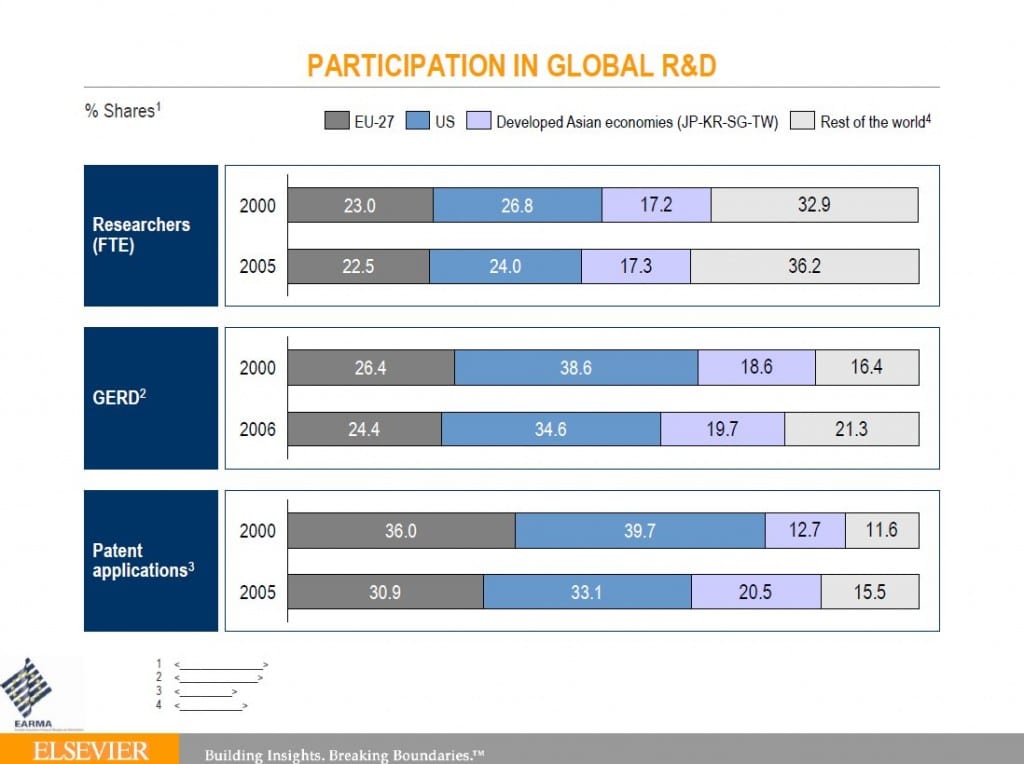 On the 11th May Jan Anderson, EARMA Chair and Senior Executive Advisor at the University of Copenhagen, presented a brief webinar which focused on the challenges we face with the growing demand for the internationalisation of research and the move towards larger consortia involving academia, industry and service users.
On the 11th May Jan Anderson, EARMA Chair and Senior Executive Advisor at the University of Copenhagen, presented a brief webinar which focused on the challenges we face with the growing demand for the internationalisation of research and the move towards larger consortia involving academia, industry and service users.
The grand challenges we face today mean we need to take a broader view in terms of research environment and work in a global framework. At the same time research funding policy differs across the globe which has had a huge affect on growth. In the last ten years there has been a marked shift in participation in global Research and Development with emerging economies threatening to surpass Europe and the United States in both R&D spend and research outputs. The figures below show the change from 2000-2005 but the trends can be extrapolated into 2011. Furthermore, in 2006-2007 when these figures were extracted the developing Asian economies did not take into account China or India, and these countries are now playing a major role in publications and R&D spending.
The development seen from China comes from a strategic decision to develop the research environment in order to compete with the rest of the world and lead in global R&D. This has been approached in a number of ways which have been highly successful. Believing the existing methods of international university ranking were biased, China developed the first multi-indicator ranking of universities commonly known as the Shanghai ranking (official name Academic Ranking of World Universities (ARWU) At the same time huge investment has been made in research and the number of citable documents from China has grown significantly. Whilst it is important to note that this growth is not necessarily because more research is produced, but has been made more noticeable through the concentration on publishing research in citable publications, China is now second to the US. With growth rates and investment high it may not be long before China overtakes the US.
For many years Europe has considered its international role and position as a given and now we can clearly see we have real competition. Ironically the focus on ranking has probably played a major role. To take the UK as an example, following the RAE there was a brief increase in growth in publications but this has been very limited and in no way comparable to other countries.
In order to approach this challenge the EC adopted the Europe 2020 strategy which puts forward three major priorities to be a vehicle for EU growth:
- Smart growth –Developing an economy based on knowledge and innovation
- Sustainable growth –Promoting a more resource efficient, greener and more competitive economy
- Inclusive growth –Fostering a high-employment economy delivering social and territorial cohesion
These reinforcing priorities will be supported by focus on strategic areas of strength and interest, building and reinforcing strategic global partnerships through collaboration, mobility and networks, and professional development to facilitate this. The three 2020 Strategy main priorities – around smart, sustainable and inclusive growth –could potentially constitute the core content of the new framework programme and with these priorities in mind FP8 may be more global in its approach than it has been before. The grand challenges of today are not limited to the European Union so the research into solutions to these problems needs to be a global endeavour increasing the need for a more global programme of research funding to bridge the gap between the US, Asia and the EU. Jan did acknowledge that it is difficult to see how collaboration can be made easier between the EU, US and Asia as approaches to R&D are so different but this is something EARMA will be looking at. It remains to be seen whether the new Framework Programme will take the lead in this, nevertheless it is clear that more collaboration, in particular with Third Countries, is expected to be seen in FP8.

